Swapping your Lada for a Rolls-Royce: how Ukrainians in the UK are mastering Challenger 2 tanks and learning about assault operations
"Excuse me, could you tell me, are we really going to the UK?" one of the Ukrainian servicemen asks UP's reporter at Airfield N in Poland. In a few hours, soldiers of the Armed Forces of Ukraine will fly to the UK from here. This question best sums up the mood of the soldiers who have been selected for training in the United Kingdom.
It's not that they are completely ignorant. But even after giving their consent and being notified of their final destination, many still did not believe they were getting the chance to do training abroad. Qualified combat training for military personnel has been one of the army's urgent needs since the beginning of Russia's full-scale invasion.
And since the Armed Forces of Ukraine are being supplied with Western weapons of almost every type (we would also like to get fighter jets, of course), it's not just desirable for Ukrainians to receive specialist training abroad, but essential. Around 10,000 Ukrainians have been trained in the United Kingdom since last spring. In 2023, London set itself a more extensive challenge: to train more than 20,000 Ukrainian servicemen.
The UK was the first of Ukraine's Western partners to decide to provide main battle tanks - Challenger 2 tanks in its case - and has been constantly sending other weapons. So this huge number of troops needing to undergo additional training seems warranted. There has been great interest in the training of Ukrainian soldiers in the United Kingdom.
During the past week alone, King Charles III, the Commander-in-chief of His Majesty's Armed Forces (also known as the British Armed Forces), and UK Defence Secretary Ben Wallace have visited the sites where Ukrainians are being trained. Ukrainska Pravda has also been visiting British training grounds, where we watched Ukrainian soldiers master the legendary Challenger 2 and AS-90 self-propelled artillery units, and saw how infantrymen are trained.
Here, in this kind of transit hub through which Ukrainian soldiers are sent for training, UP met both recently mobilised troops and those who have already participated in military operations. As he waited with his fellow soldiers for the plane to arrive, the newly appointed platoon commander of a landing brigade told UP, "We spent a month at the training ground, and then we were asked if anyone wanted to continue their training abroad. Obviously there were a lot of applicants, but we were told they selected people based on the results of the preliminary training, although there are also people who were actually accepted only a few days after they signed up at the enlistment office.
Somehow everything should hold together, but I don't understand how yet." The other men around him are talking noisily together during a cigarette break and discussing the upcoming flight. "Hey, pull yourselves together!" says one of the commanders of a group of several hundred troops. "What's all this mess?
Throw all those cigarette butts in the bin. Don't be ungrateful to your hosts, show some respect. Don't forget that we are from Ukraine!
They'll judge all Ukrainians by you. You're the most popular army in the world right now." This epithet seems to flatter the men, although after the long journey from Ukraine, most of the soldiers appear exhausted and don't look much like future "commandos" right now.
"First you must forget what you knew, and then master their technique"
The very next day, at one of the training grounds in the south of England, UP has the opportunity to watch some completely different soldiers who have already been in the UK for a week.
Focused, ready to absorb information, and with a twinkle of interest in their eyes. Seven days ago, these men were no different from their colleagues whom we met at the Polish airfield. What changed them was the warmth of their hosts, their interest in mastering Western technology, and their desire to get as much as possible out of their training.
Gunners are being trained here at this training ground.
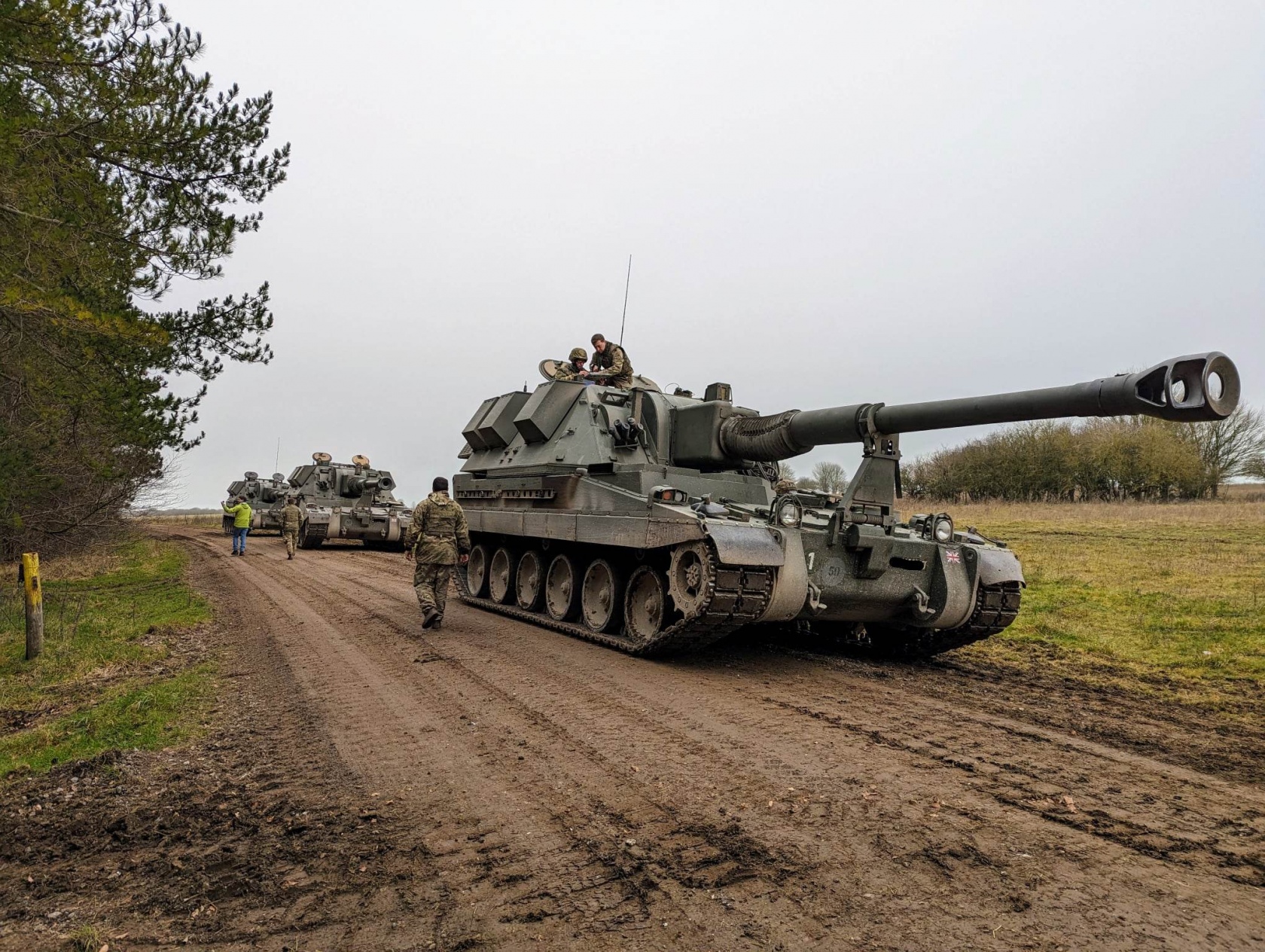 At the training ground, Ukrainians practise artillery operations from caches on an AS-90
At the training ground, Ukrainians practise artillery operations from caches on an AS-90
There are several British instructors near each of the Ukrainian crews. They make suggestions, talk about the specifics of operating the equipment, and check whether the Ukrainians correctly understand what they want them to do. To make understanding easier, interpreters are assigned to the crew, mainly Ukrainians who were forced to flee the war.
The training is taking place on British AS-90 self-propelled artillery installations. Britain has promised to supply about 30 of these self-propelled howitzers to the Armed Forces of Ukraine after the Ukrainians have learned to operate them. The training lasts several weeks. The crews are divided into two groups: some master the technique on the field, and others on simulators.
Then they swap over. "You're here to see Ukrainian soldiers learning how to make the best use of this equipment," says Lieutenant Colonel Botterill, one of the British instructors. "The most striking thing is that the soldiers are definitely motivated and take in all the information extremely well."
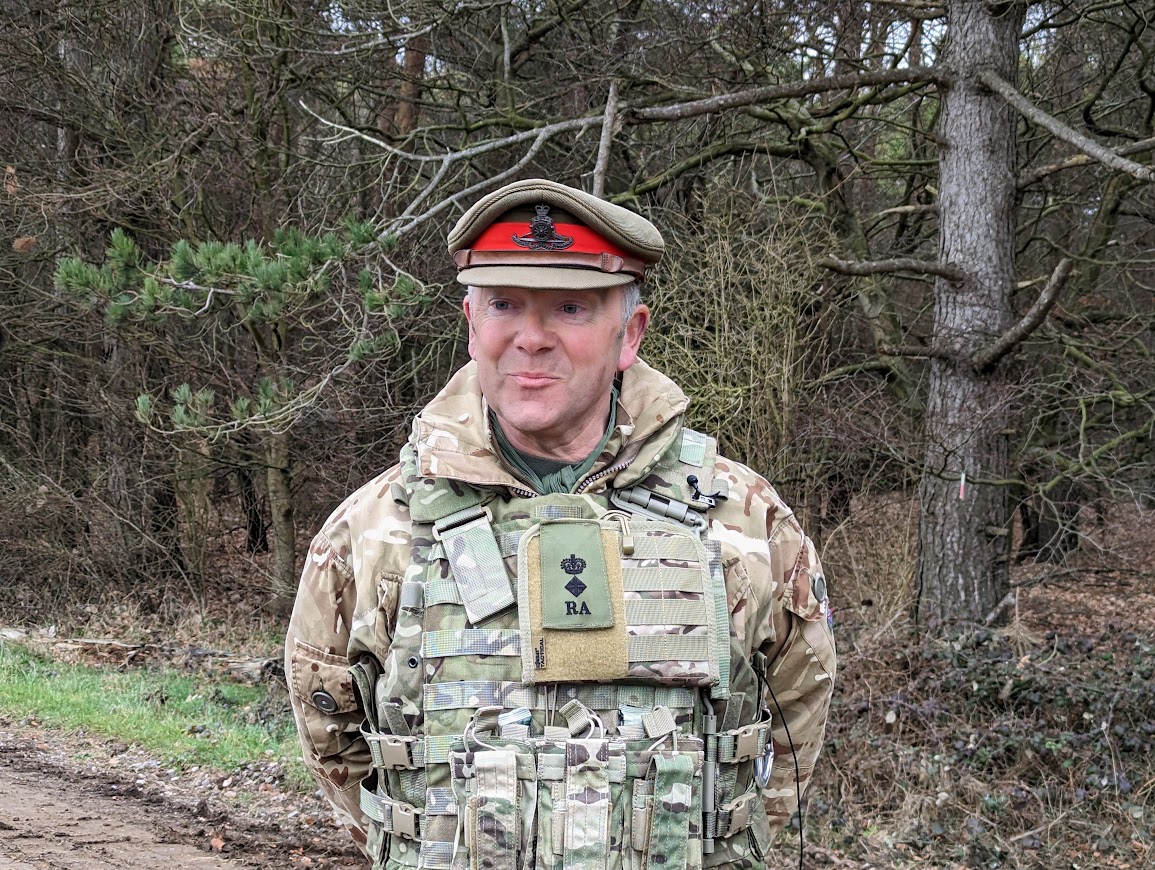 Lieutenant Colonel Botterill is certain that the Ukrainians will be able to quickly learn how to operate British AS-90 self-propelled howitzers (SPHs)
Lieutenant Colonel Botterill is certain that the Ukrainians will be able to quickly learn how to operate British AS-90 self-propelled howitzers (SPHs)
He adds that most of the mistakes the Ukrainians make are nearly always related to their desire to act as quickly as possible. "During the missions we had this morning, they were trying to push the button as soon as possible to speed up the process.
And sometimes it gets a little too fast," Botterill says, smiling. "However, we are only in the middle of the course and there is still a lot to learn. They always want to be the first to engage.
In terms of grades, we currently have a solid 8.5 out of 10. But there is always room for improvement," he adds.
 British instructors watching Ukrainian crews perform a task
British instructors watching Ukrainian crews perform a task
The Lieutenant Colonel stresses that the British are not just teaching the Ukrainians; they are also learning themselves. Serhii, the commander of an artillery group, agrees with this, as he watches his subordinates operate the western SPHs.
"The British ask a lot of questions too. For instance, they are interested in the opinions of people who have combat experience. In fact, they are very professional and take in everything they are either told or asked about.
If they can't answer a question right away, they get together in the evening and discuss it with each other and give us an answer in the morning," says Serhii. While we are talking to the commander and instructors, the crews are moving the SPHs to their positions. Today's task is to quickly engage enemy positions from cover.
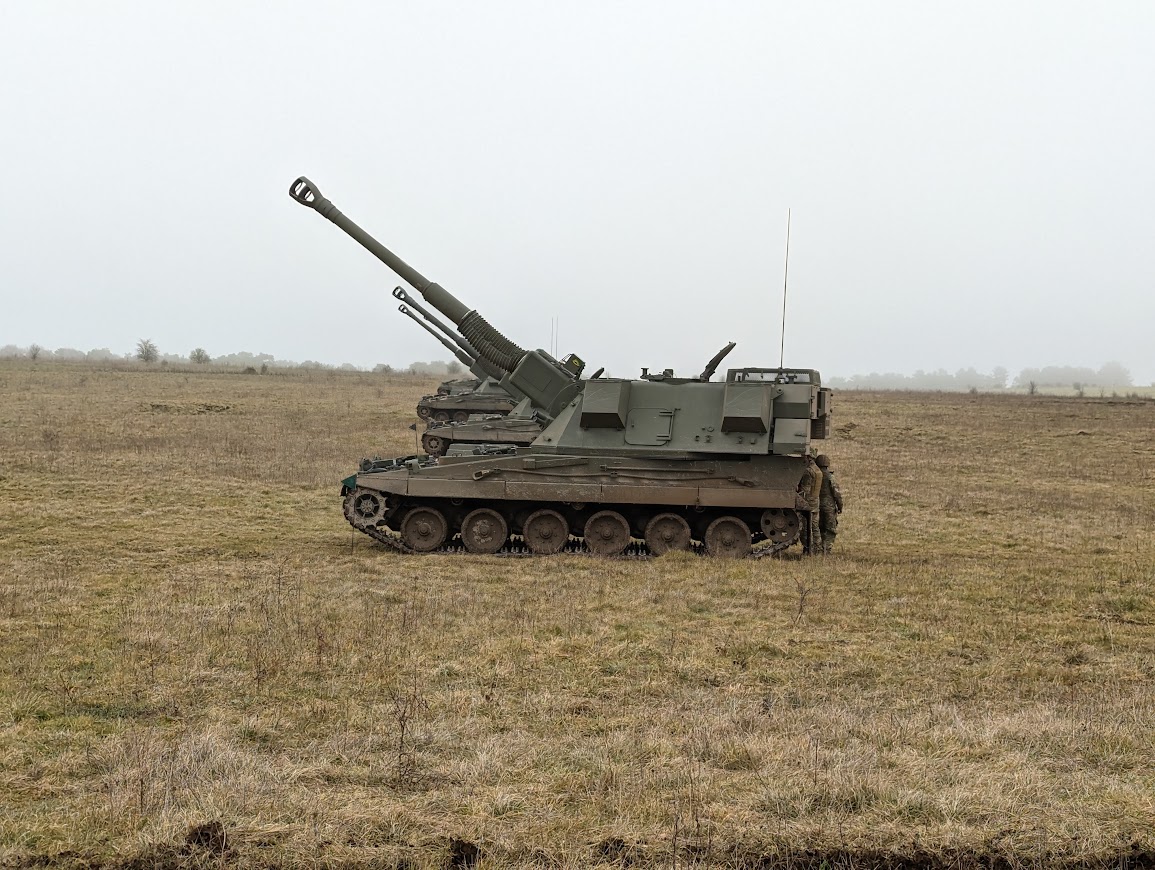 During the exercises, British artillerymen closely observe any mistakes so that they can be promptly corrected
During the exercises, British artillerymen closely observe any mistakes so that they can be promptly corrected
When something doesn't go according to plan, the British instructors will go over and patiently explain what was done wrong and what has to be changed.
"Half of the military personnel who are currently training already have combat experience. However, here we must first forget what we knew, and then study their equipment," Serhii explains. The Ukrainian soldiers also feel the difference compared with the Soviet equipment that the Armed Forces are used to.
"It doesn't seem to be very different, but their equipment is much more sophisticated. I used to operate a 2S3 [Akatsiya - UP]. It has no personal gun laying.
While here [operating an AS-90 - UP], there is a lot of automation, more computerisation. It's like swapping a Lada for a Rolls-Royce. The controls are the same, but it's much more comfortable," says a soldier known as Watson, a platoon commander who is training at the ground today.
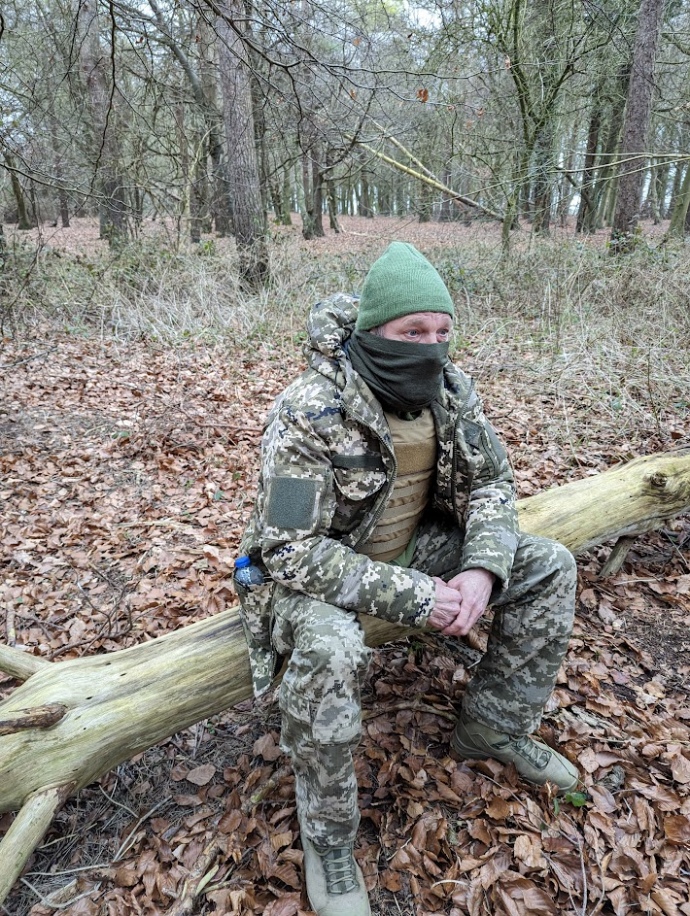 Watson from Sumy: "We're here to learn how to fire at our enemies even more accurately"
Watson from Sumy: "We're here to learn how to fire at our enemies even more accurately"
Watson, who is from the northeastern city of Sumy, was conscripted in December 2022.
He was abroad when the war started, but returned home. When he received a military conscription notice, Watson went to the enlistment office, but he was not accepted by the military at first, as he was deemed only partially fit for military service. "I went to the military enlistment office twice, saying, 'Guys, if there is a chance of taking me, please, I'm not hiding, here's my phone number.' And just before the New Year, they finally took me.
After all, I served in the artillery 30 years ago. I've forgotten a lot, but it will come back to me," Watson says. We drive from the training ground to a pavilion full of simulators, where British instructors are using computers to set tasks for the Ukrainian crews.
The Ukrainian soldiers are working on large simulators that not only completely replicate all the elements inside a combat vehicle, but even simulate the vibrations of the vehicle while driving and firing. The loaders bring real shells, the gunners set the coordinates and hit targets. The whole process is displayed on monitors through which the British instructors are observing.
If necessary, they adjust the work.
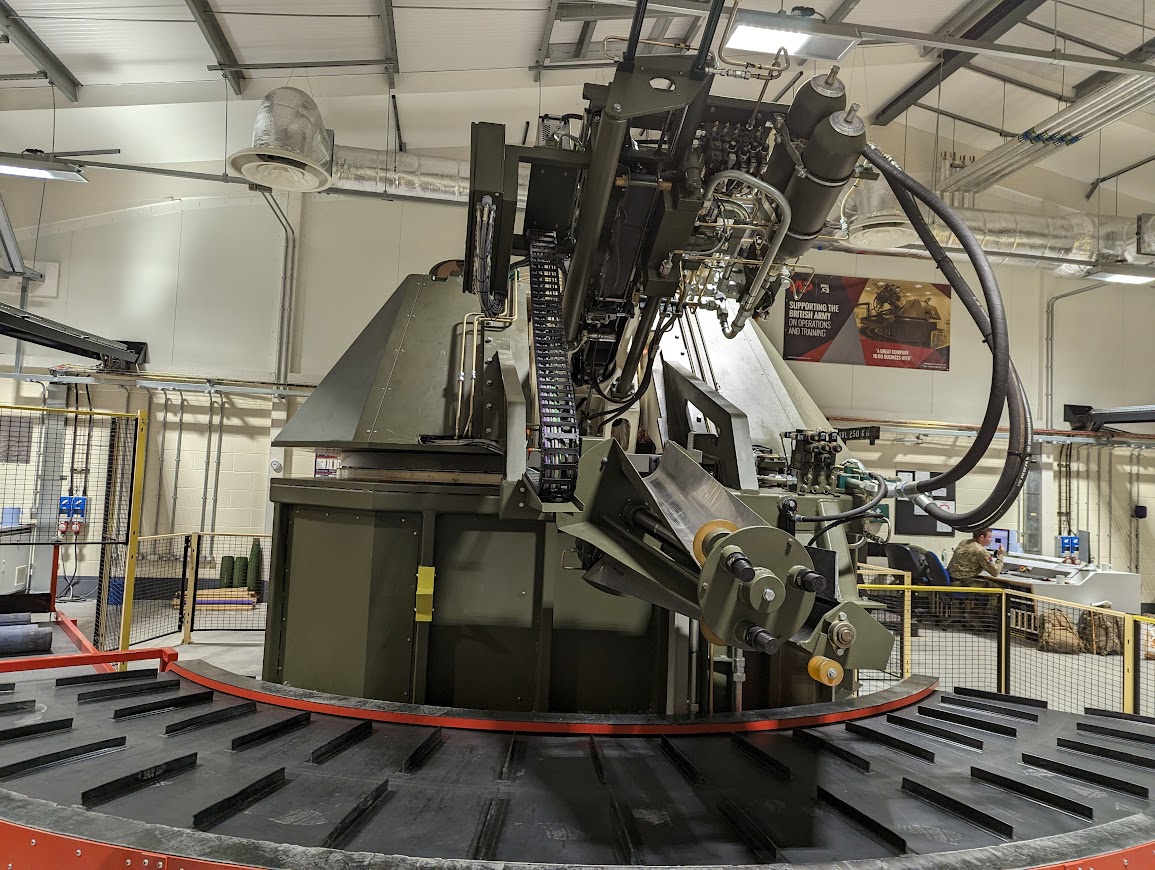 An SPH simulator enables the soldiers to practise combat engagement faster and saves shells.
An SPH simulator enables the soldiers to practise combat engagement faster and saves shells.
"If we'd had at least something like this back in the day, instead of doing all our training at training grounds, the results would have been much better," says artillery commander Serhii.
A tank is a tank, but this one is way more comfortable
Our next stop is the training ground where Ukrainian tank crews are mastering the Challenger 2. This is the training ground that UK Defence Secretary Ben Wallace had visited the day before us. The initial photos from his visit caused journalists some alarm, as they showed Wallace sitting in vehicles that did not resemble the tanks that everyone sees on the internet.
However, instructors at the training ground explained that the tank crews learn on a training vehicle first that completely replicates the design and weight of a tank. The only difference is that it has no turret.
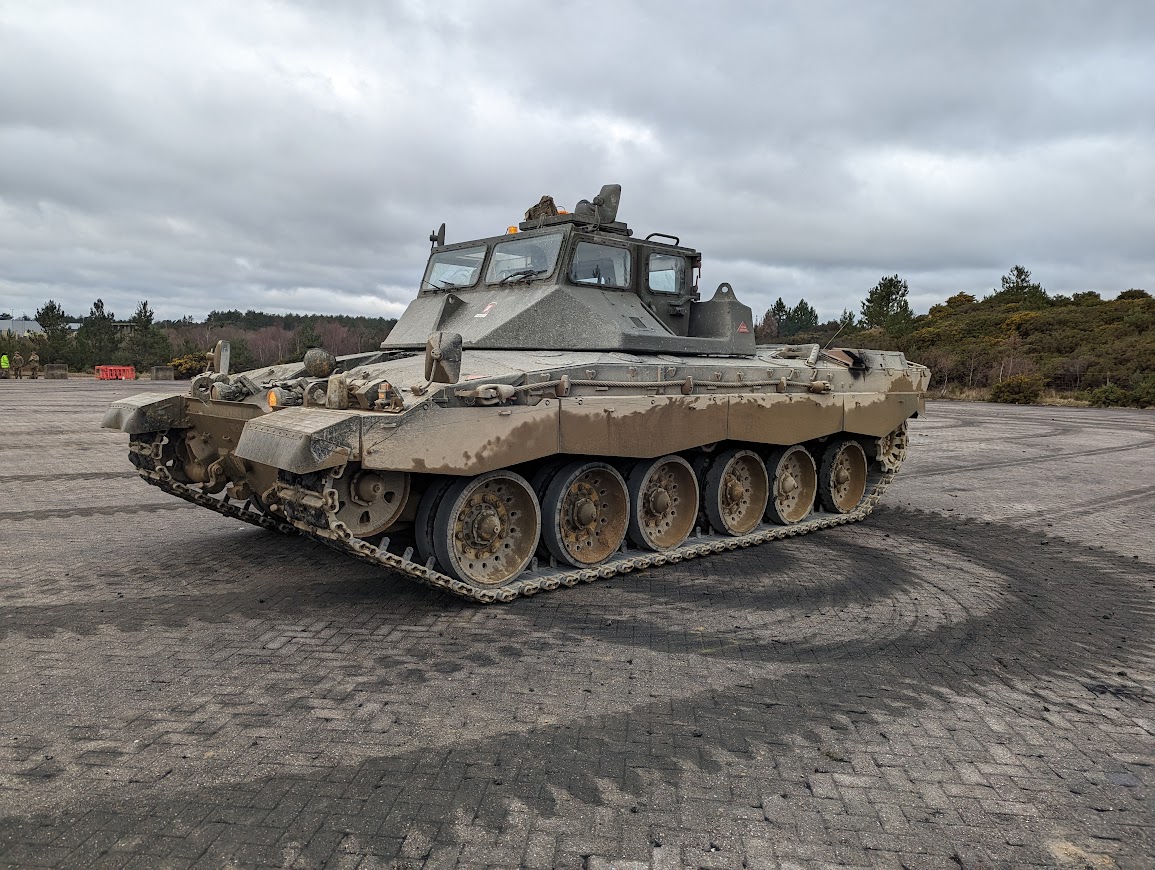 The training tank is an exact copy of the Challenger 2, but without a turret
The training tank is an exact copy of the Challenger 2, but without a turret
A bunch of Ukrainian soldiers have gathered near one of these training tanks. They are preparing the vehicle for operation, clearly knowing what they are doing: checking the lubricant level, adjusting the tracks, and busily tinkering with something using hammers.
"We're checking the lubricant level and making sure all the fluid levels are optimal. You look after it like you would your regular Rolls-Royce ahead of a wedding, but here you have got yourself a tank," says one of the soldiers, laughing, when asked to explain what they are doing. "Operating a tank with and without a gun is not much different.
So it's the same tank, only without the turret that rotates," a tank driver known as Hul reassures us. However, there is also a combat Challenger parked next to the training tank, so we were lucky enough to see it and even get inside.
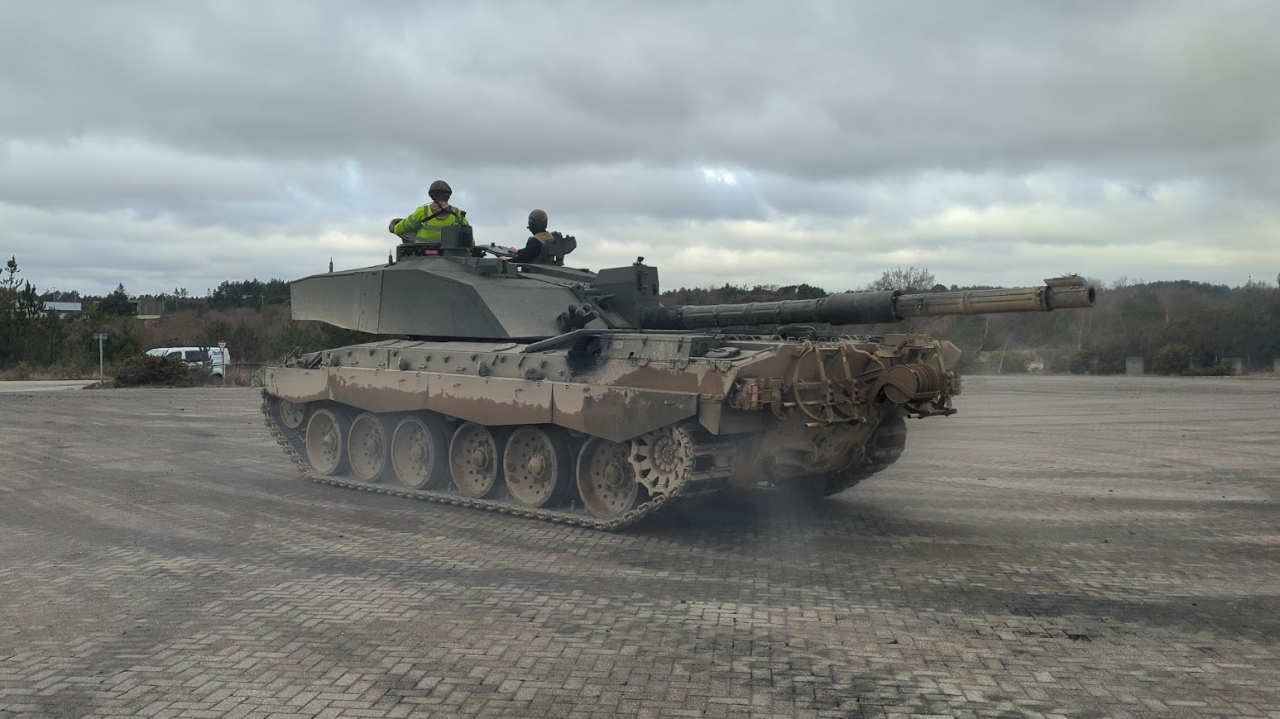 The Ukrainians will experience the Challenger 2 combat tank at the very end of their training. The Brits say they will have to fire from it, among other things
The Ukrainians will experience the Challenger 2 combat tank at the very end of their training. The Brits say they will have to fire from it, among other things
Before his Challenger 2 training, Hul was in the military for five years.
He served on a Soviet T-80 battle tank in the Joint Forces Operation [a set of military and legal measures to counter Russian aggression in Donbas in 2018-2022 - ed.]. "I wouldn't say that the controls [of this tank] are very different. A tank is a tank, it has two levers...
Well, this one has a hand brake," Hul laughs. "Joking aside, it's very comfortable, and everything in it is much better. And this is both a plus and a minus. It's cool and compact inside.
Having to drive a combat vehicle lying down is new for me. You feel so relaxed you could fall asleep."
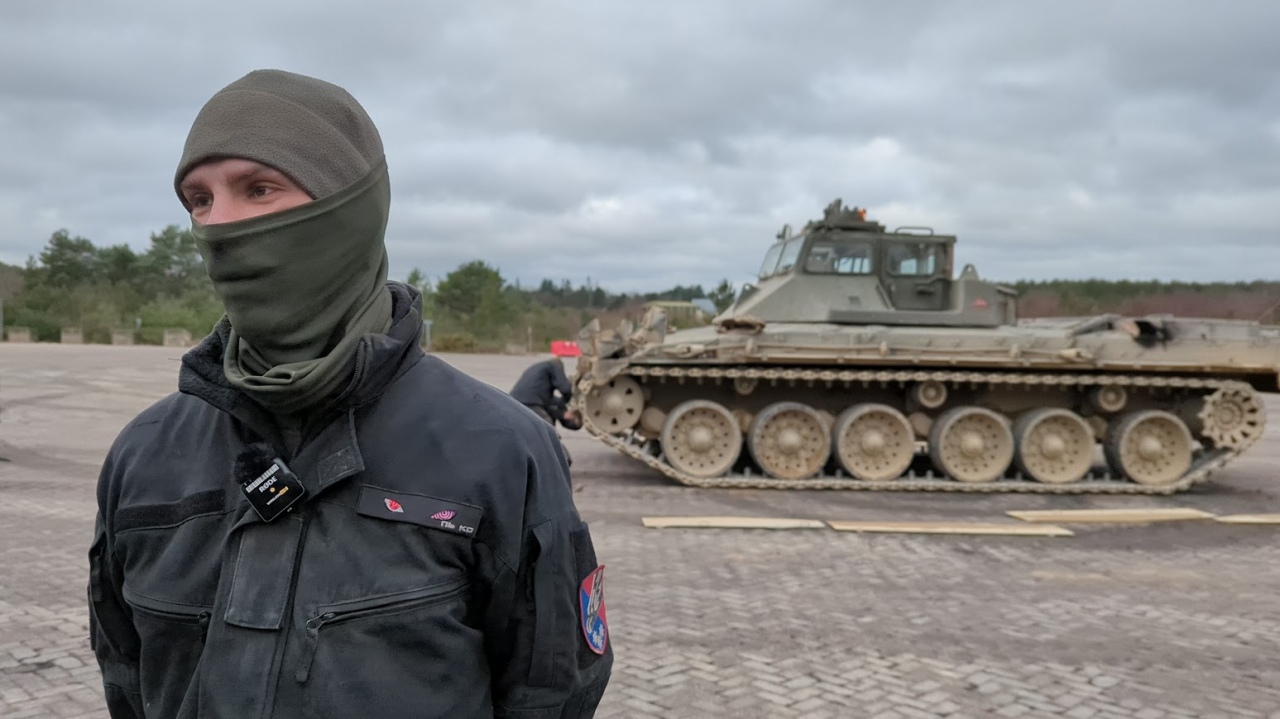 Tank driver Hul jokes that the Challenger 2 is so comfortable that you could fall asleep in it
Tank driver Hul jokes that the Challenger 2 is so comfortable that you could fall asleep in it
Hul explains that before the practical training, the soldiers had a theory class. "All the information is presented in a very clear and detailed way.
I don't know how anyone could have trouble understanding it" is how Hul describes the approach taken by the British instructors. After talking to the soldiers, it is time for demonstration drills at the tank range. As well as the Challengers, the Ukrainians at this training ground are learning to operate FV432 Bulldog armoured personnel carriers and the familiar AS-90s.
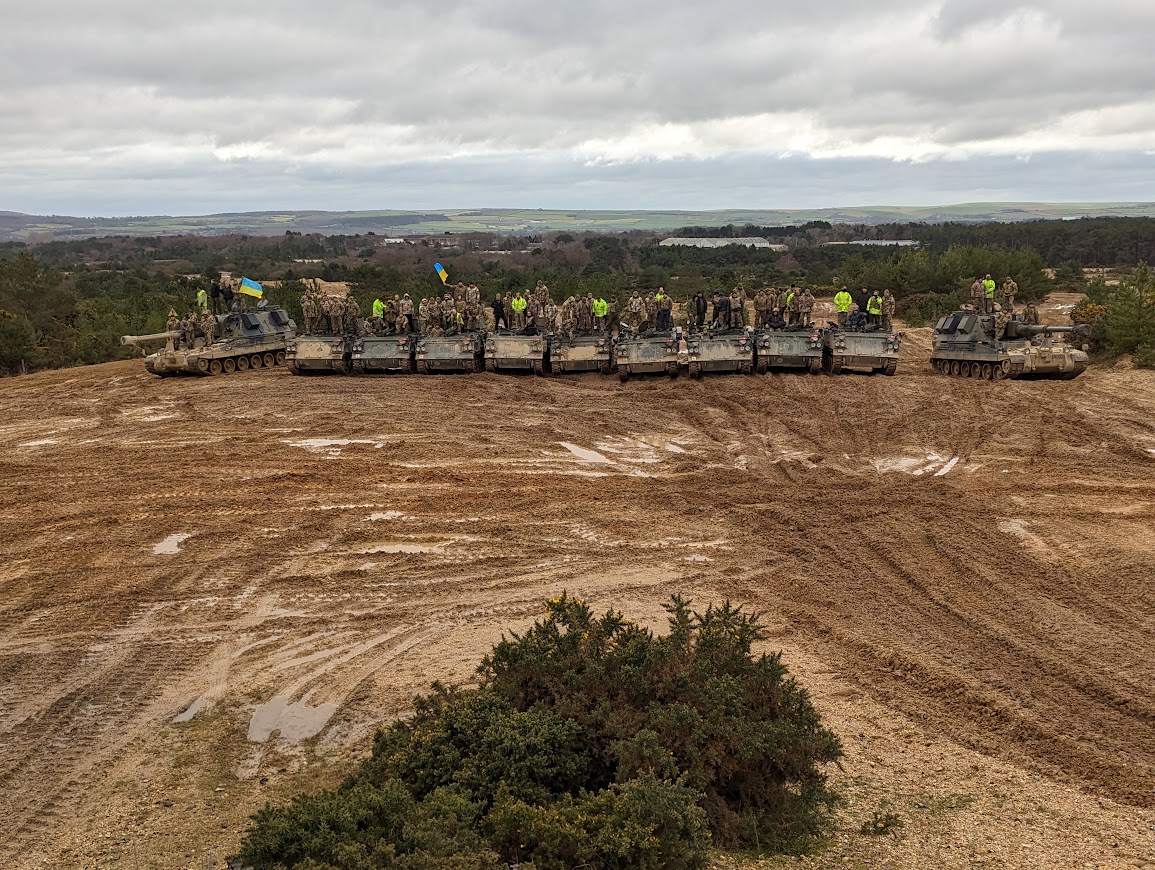 The Ukrainian soldiers are so confident at operating the British vehicles that you wouldn't think they had only been training on them for a few weeks
The Ukrainian soldiers are so confident at operating the British vehicles that you wouldn't think they had only been training on them for a few weeks
On the eve of our visit, a typical British rain fell over the training ground, turning the terrain into solid thick mud.
In some ways, the weather and landscape there resembled the Kyiv region or northern Slobozhanshchyna in spring. It seemed tailor-made for sceptics who constantly doubt whether the heavy Challenger 2s can work on Ukrainian soil. "We have operated on soft terrain many times before, so I don't think this will be a problem.
It's about understanding the terrain and using the tank's capabilities. We have operated many times in countries where the terrain is very soft, and we managed to do it quite well," Sergeant McLaughlan, a British instructor, reassures us.
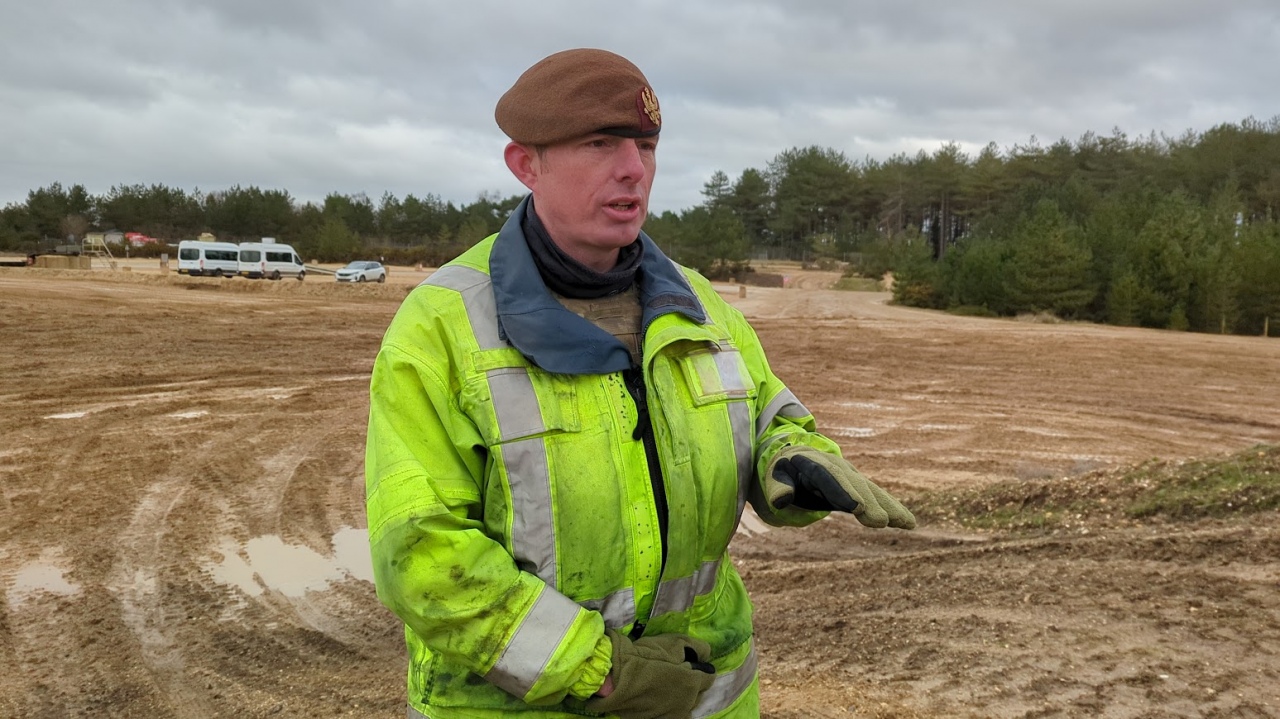 The British instructor assures us that Ukrainian soil is unlikely to be a problem for a British tank
The British instructor assures us that Ukrainian soil is unlikely to be a problem for a British tank
However, driving isn't everything. A tank crew consists of four members: a commander, a gunner, a loader and a driver.
Just like with the self-propelled guns, the British use tank simulators, where each crew member practises the duties that they would perform during combat.
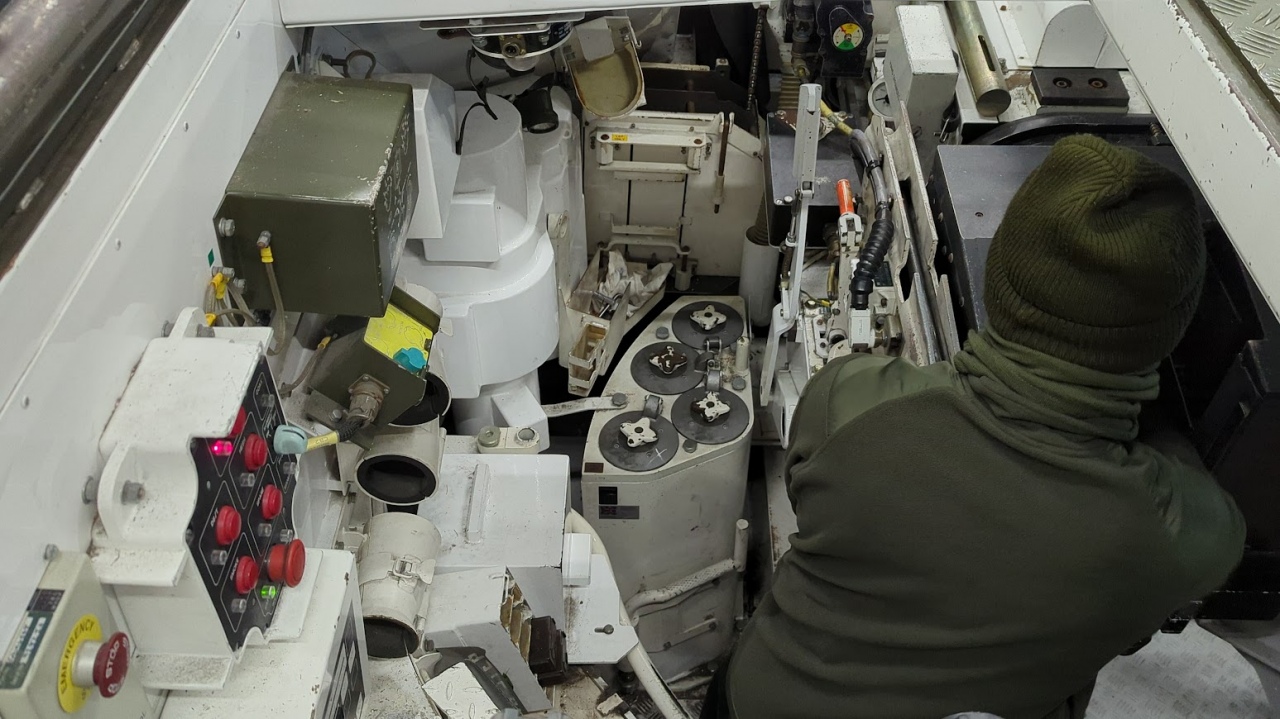 Judging by the simulator, you wouldn't think you could doze off inside
Judging by the simulator, you wouldn't think you could doze off inside
"The Brits are at once friendly and exacting"
It's important to master the equipment, but general military training is not neglected either. The Ukrainians in Britain are also trained in urban and rural combat tactics. A model city has been built at one of the training grounds so that soldiers can practise assault and mop-up operations in buildings. It was constructed when the British military was fighting the IRA.
Now it is being used to train Ukrainian soldiers. A sign in Ukrainian at the entrance to the city reads "Welcome to hell".
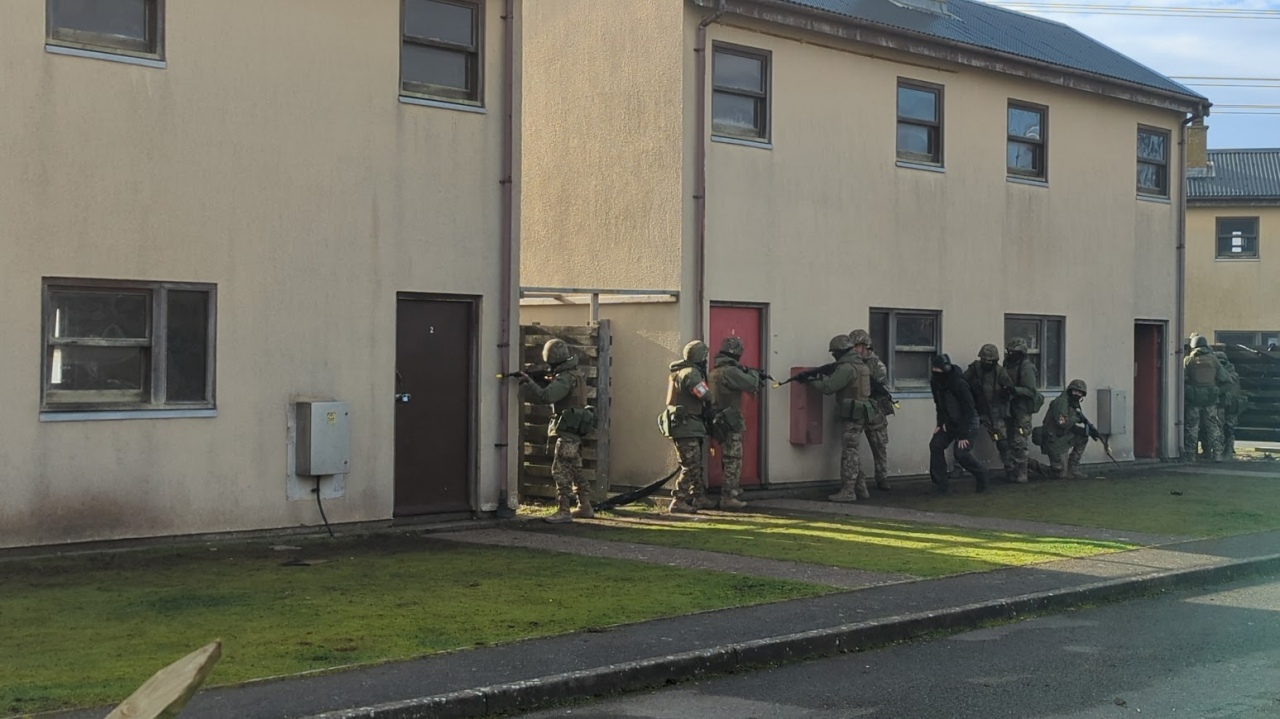 Ukrainian soldiers being trained in urban combat
Ukrainian soldiers being trained in urban combat
Under the close supervision of British, Canadian and Lithuanian military personnel, soldiers from the Ukrainian Armed Forces are practising coordinating their actions during urban combat. "Everything here is very realistic: grenades, explosions, gunfire, commanders issuing orders.
I've learned a lot about urban combat here: what to do, where to go and what areas to avoid," a soldier known as Goof tells us. Goof is from Kropyvnytskyi in the centre of Ukraine.
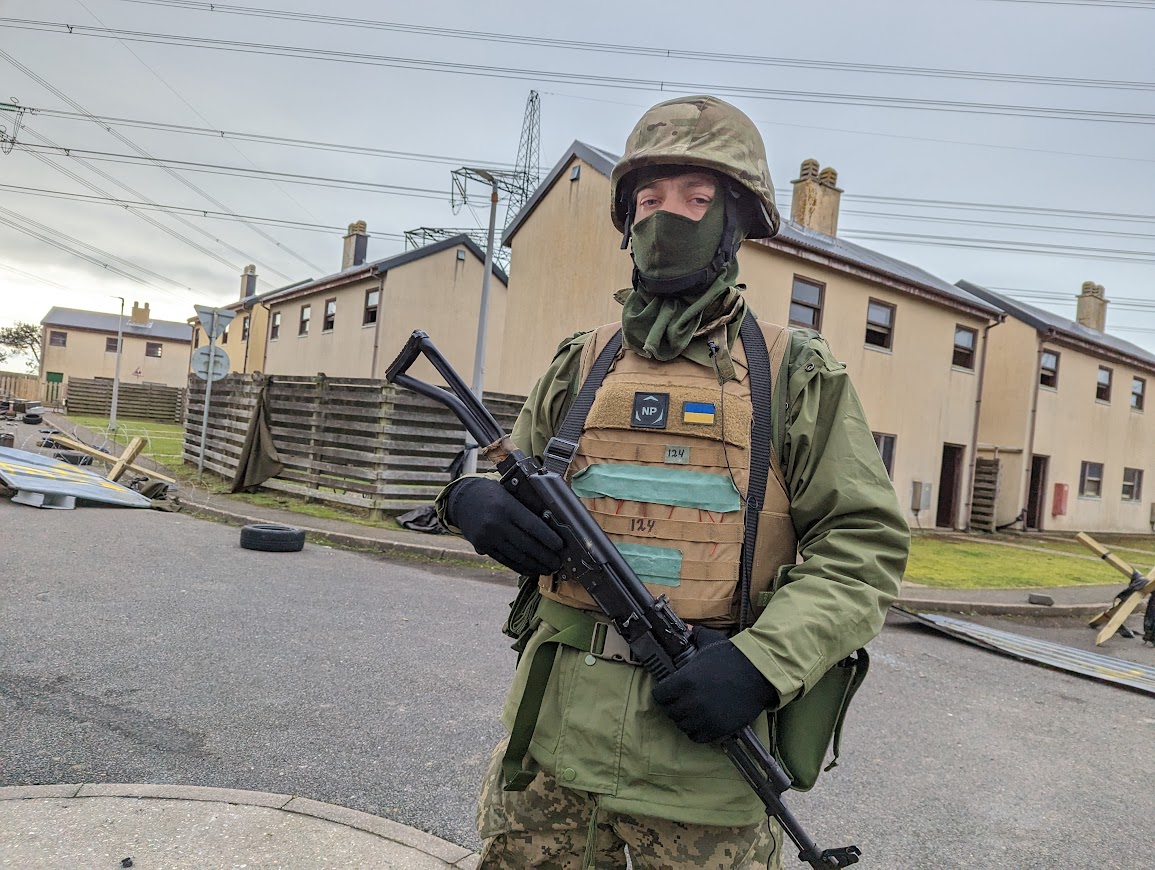 Goof had wanted to become a professional soldier his entire life
Goof had wanted to become a professional soldier his entire life
He lived abroad for a long time and tried to join the French Foreign Legion, but when the full-scale war started, he enlisted in the Ukrainian army and signed a contract with the Armed Forces of Ukraine. While we talk to Goof, soldiers are practising a mock assault operation in a building nearby, clearing several floors of supposed enemy forces.
I notice that most of the buildings in the model city are two-storey houses, rather than the multi-storey buildings common in Ukraine. "Yes, we know that Ukraine has more multi-storey buildings, but it's not an issue. Each storey basically requires us to act in accordance with the same principles.
The more storeys, the more units should be deployed," Major Middleton, the leader of the British instructors, explains.
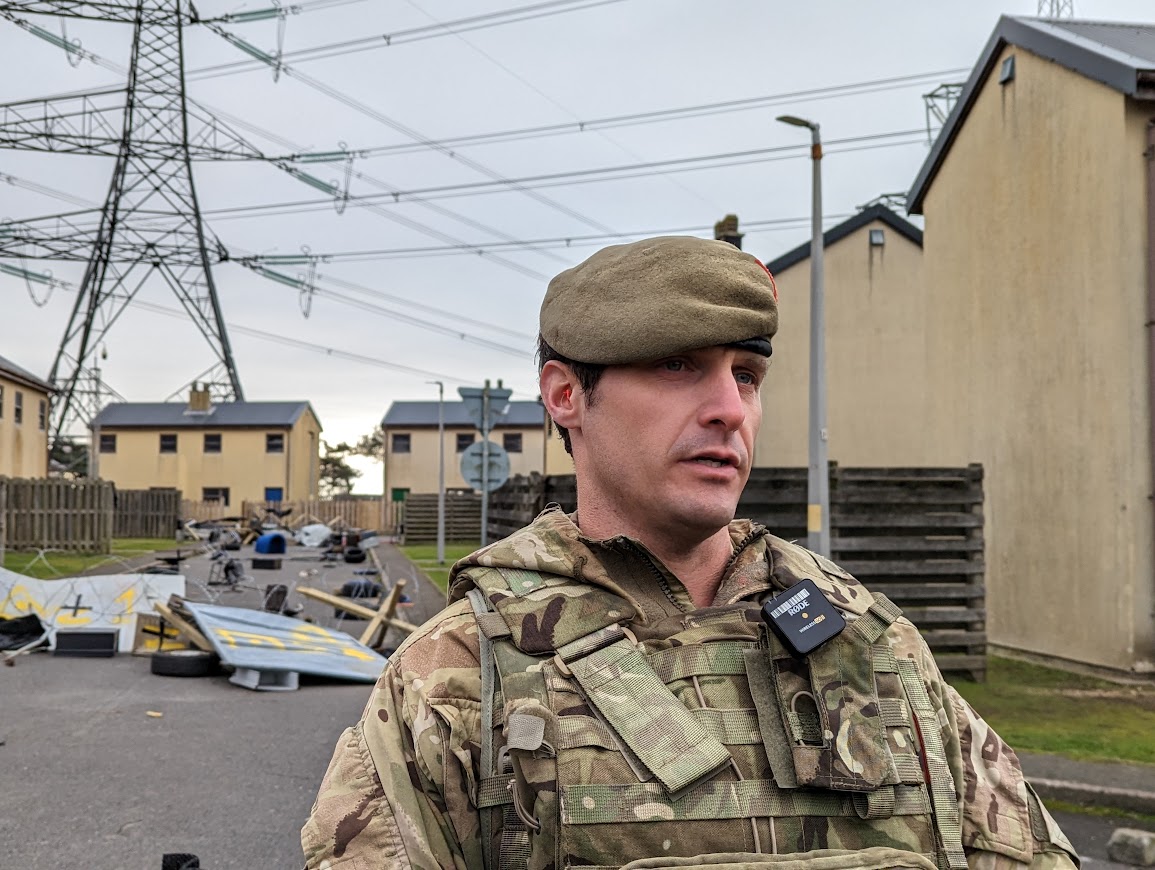 Major Middleton is convinced that urban combat training will benefit Ukrainian soldiers during actual combat
Major Middleton is convinced that urban combat training will benefit Ukrainian soldiers during actual combat
After their urban combat training, the Ukrainian soldiers get some training in trench warfare, in the sconces. They practise defending their positions and assaulting enemy positions with their British instructors at a dedicated training ground. We are asked to wear earplugs; no one is allowed to enter the training grounds without them.
The explosions are extremely loud. The training is a very close imitation of real-life combat: there are drones, artillery shelling, and injured soldiers - British veterans who had themselves been injured in combat. The Ukrainian soldiers are not given any advance warning about the training scenario or what might happen during the exercises, so everything is a surprise to them.
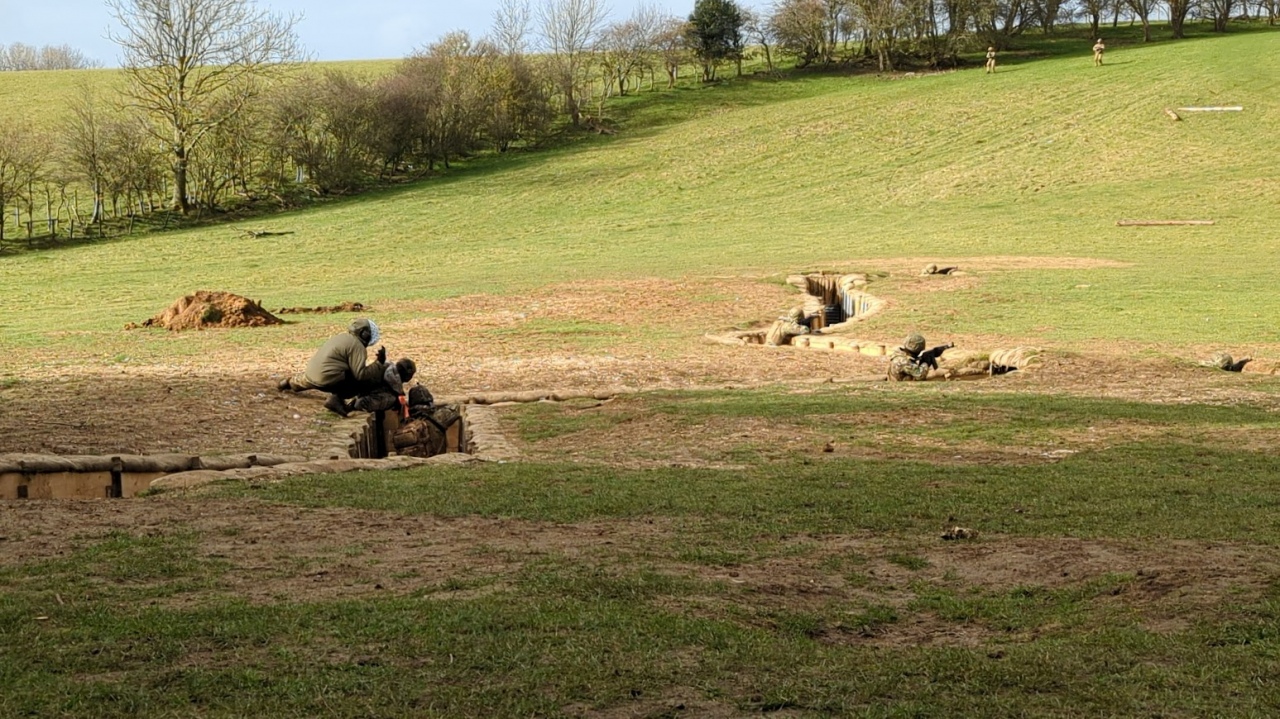 The British instructors try to create the most realistic conditions possible so that the soldiers don't have to get used to loud sounds again in the future
The British instructors try to create the most realistic conditions possible so that the soldiers don't have to get used to loud sounds again in the future
"They are trying to be quite friendly, but they're also very exacting - they know that's what we need.
Defending trenches, repelling attacks, dealing with the injured, evacuating the injured. All of this will be hugely helpful in actual combat," says Volodymyr from Kherson. He spent eight and a half months under Russian occupation and joined the Ukrainian Armed Forces as soon as the city was liberated.
"I was not called up, so I signed a contract instead," Volodymyr says.
 Volodymyr spent eight and a half months under Russian occupation and joined the Ukrainian Armed Forces as soon as Kherson was liberated
Volodymyr spent eight and a half months under Russian occupation and joined the Ukrainian Armed Forces as soon as Kherson was liberated
He explains that under other circumstances, a visit to the UK would have been an adventure for him. Now, however, he was feeling totally spent after a day of exercises in the freezing wind. "But we didn't come here for entertainment," Volodymyr says emphatically.
***** We travelled back to Ukraine with the Ukrainian soldiers who had completed the training. I thought back to when we'd just arrived in Poland.
I recalled the faces of the Ukrainian soldiers we met there, and how I'd wondered how different they would be by the time they returned to Ukraine. Looking around me, I realised that the answer to this question was right before my eyes: they are still the same Ukrainian soldiers. Their eyes are different, though: they look ahead with more confidence.
But the fire in their eyes is still the same. Yevhen Buderatskyi, Ukrainska Pravda Translated by Yelyzaveta Khodatska, Artem Yakymyshyn, Oxana Hart and Olya Loza
Edited by Teresa Pearce